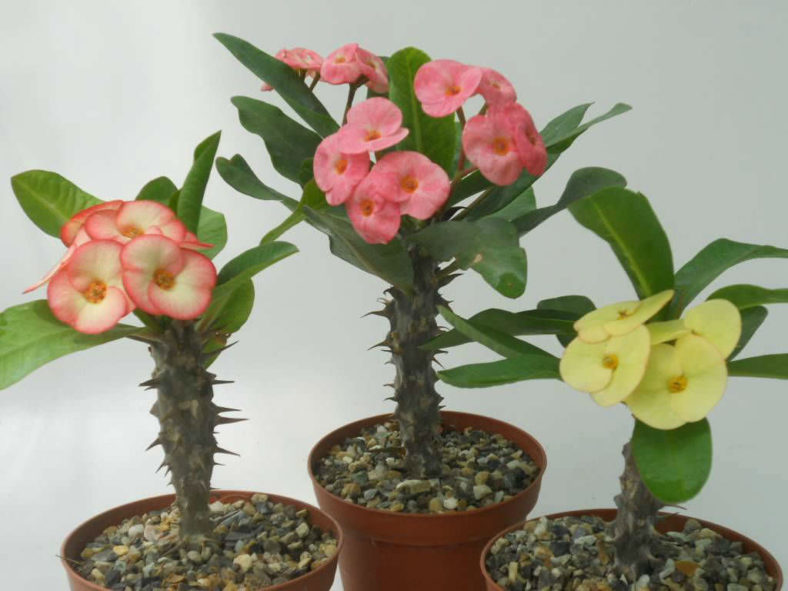Euphorbia milii, commonly known as Crown of Thorns, adds drama to plantings indoors or outdoors. Colored bracts in shades of red, pink, yellow, orange, and white grace the stems that grow up to 3 feet (90 cm) tall. Bright green oval leaves do not entirely hide the sharp horns that make this succulent a focus of religious legend. Well-suited to USDA Plant Hardiness Zone 10, this sun-lover flourishes outdoors if sheltered from unanticipated frost. Given proper care, the Crown of Thorns blooms most of the year.
1. Choose a sunny location for your Crown of Thorns. Whether of the original Madagascar varieties, the larger California Giant hybrid, or the new bushy, less gangly Thai hybrids, these plants do best in the full-day sun of southern exposure. The sun is essential to abundant and sustained blooming.
2. Plant the indoor Crown of Thorns in good potting soil and provide thorough drainage for excessive water.
3. Water the Crown of Thorns regularly. A weekly schedule is not excessive if the soil is allowed to dry to an inch (2.5 cm) depth between waterings. Overwatering can result in spongy stems, leaf loss, and failure to bloom. In addition to testing soil for moisture, watch for leaf droop as a signal that more water may be needed. Maintain this schedule throughout spring, summer, and fall to maximize the chances of continuous and prolonged blooming.

4. Fertilize the Crown of Thorns with a full-strength liquid fertilizer when you plant. After that, dilute the fertilizer to half-strength and apply it once a month during the spring, summer, and fall.
5. Restrict water during the winter months to rest the plant. Soil can dry completely, and some leaves may shed between small waterings. Do not fertilize during this period. Do not mist. A three-month artificial winter provides adequate time for your plant to prepare for another extended blooming season.
Tip
Crown of Thorns is temperature-sensitive as well as highly reactive to moisture. Therefore, a sudden chill or damp spell is first reflected in the absence of bloom.
Source: sfgate.com
Links
- Back to genus Euphorbia
- Succupedia: Browse succulents by Scientific Name, Common Name, Genus, Family, USDA Hardiness Zone, Origin, or cacti by Genus